Related Research Articles

1699 (MDCXCIX) was a common year starting on Thursday of the Gregorian calendar and a common year starting on Sunday of the Julian calendar, the 1699th year of the Common Era (CE) and Anno Domini (AD) designations, the 699th year of the 2nd millennium, the 99th year of the 17th century, and the 10th and last year of the 1690s decade. As of the start of 1699, the Gregorian calendar was 10 days ahead of the Julian calendar, which remained in localized use until 1923.
This article contains information about the literary events and publications of 1708.
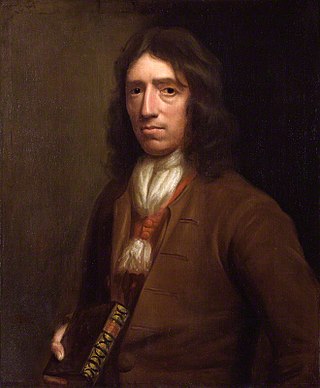
William Dampier was an English explorer, pirate, privateer, navigator, and naturalist who became the first Englishman to explore parts of what is today Australia, and the first person to circumnavigate the world three times. He has also been described as Australia's first natural historian, as well as one of the most important British explorers of the period between Francis Drake and James Cook, he "bridged those two eras" with a mix of piratical derring-do of the former and scientific inquiry of the later. His expeditions were among the first to identify and name a number of plants, animals, foods, and cooking techniques for a European audience; being among the first English writers to use words such as avocado, barbecue, and chopsticks. In describing the preparation of avocados, he was the first European to describe the making of guacamole, named the breadfruit plant, and made frequent documentation of the taste of numerous foods foreign to the European palate such as flamingo and manatee.

John Bartram was an American botanist, horticulturist, and explorer, based in Philadelphia, Pennsylvania, for most of his career. Swedish botanist and taxonomist Carl Linnaeus said he was the "greatest natural botanist in the world." Bartram corresponded with and shared North American plants and seeds with a variety of scientists in England and Europe.
The year 1768 in science and technology involved some significant events.
The year 1766 in science and technology involved some significant events.
The year 1799 in science and technology involved many significant events, listed below.
The year 1806 in science and technology involved some significant events, listed below.
The year 1715 in science and technology involved some significant events.
The year 1713 in science and technology involved some significant events.
The year 1658 in science and technology involved some significant events.
The year 1676 in science and technology involved some significant events.
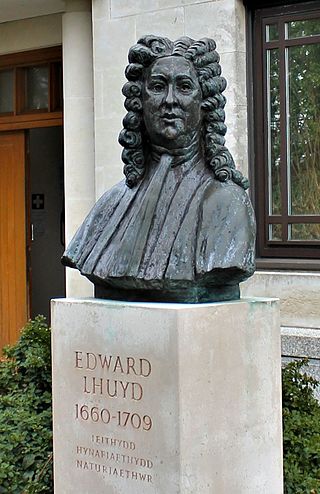
Edward Lhuyd FRS was a Welsh naturalist, botanist, linguist, geographer and antiquary. He is also named in a Latinate form as Eduardus Luidius.
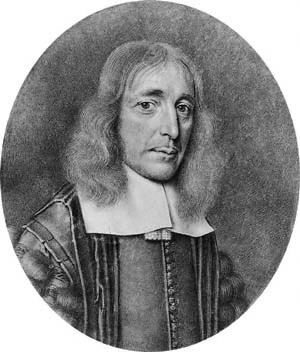
Thomas Willis FRS was an English doctor who played an important part in the history of anatomy, neurology and psychiatry, and was a founding member of the Royal Society.
Events from the year 1699 in England.

The flora of Western Australia comprises 10,551 published native vascular plant species and a further 1,131 unpublished species. They occur within 1,543 genera from 211 families; there are also 1,317 naturalised alien or invasive plant species more commonly known as weeds. There are an estimated 150,000 cryptogam species or nonvascular plants which include lichens, and fungi although only 1,786 species have been published, with 948 algae and 672 lichen the majority.
Events from the year 1699 in France.
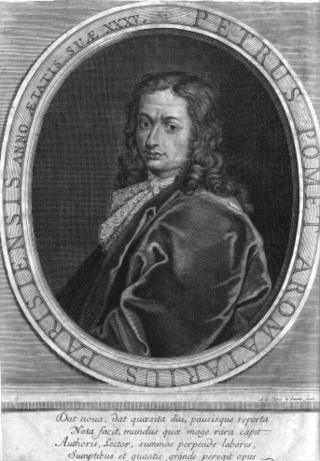
Pierre Pomet was a French pharmacist.
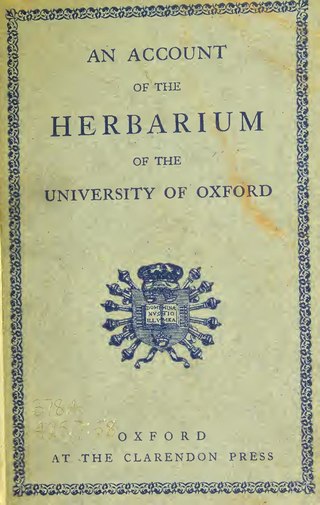
Fielding-Druce Herbarium, part of the Department of Biology, University of Oxford, located on South Parks Road, in Oxford, England. A herbarium is a collection of herbarium sheets, with a dried pressed specimen of the botanic species, whether they were bound into a book by one dedicated individual, or have been amassed into huge collections. They are like plant ID cards. As paper was expensive, multiple specimens are normally mounted on one sheet. The 2 cores of the Herbarium collection, are bequeathed to the University from Henry Fielding (1805-1851) containing a non-British and Irish collection. It also covers most taxonomic groups and geographical areas. It is particularly rich in nineteenth century material from the Americas and south and south east Asia. The other core a British and Irish collection from George Claridge Druce (1850-1932) in 1932, this is particularly rich in specimens from Oxfordshire, Buckinghamshire and Berkshire. Other collections were added later.
References
- ↑ Bach, J. (1966). "Dampier, William (1651–1715)". Australian Dictionary of Biography. National Centre of Biography, Australian National University. Retrieved 2012-03-15.
- ↑ Lhuyd, E. (1699). Lithophylacii Britannici Ichnographia, sive lapidium aliorumque fossilium Britannicorum singulari figura insignium. London: Gleditsch and Weidmann.
- ↑ Delair, J.B.; Sarjeant, W.A.S. (2002). "The earliest discoveries of dinosaurs: the records re-examined". Proceedings of the Geologists' Association. 113: 185–197. doi:10.1016/S0016-7878(02)80022-0.
- ↑ Gunther, R.T. (1945). Early Science in Oxford: Life and Letters of Edward Lhuyd, volume 14. Oxford.
- ↑ "Pomet, Pierre (1658-1699)". catalogue.bnf.fr (in French). Bibliothèque nationale de France.